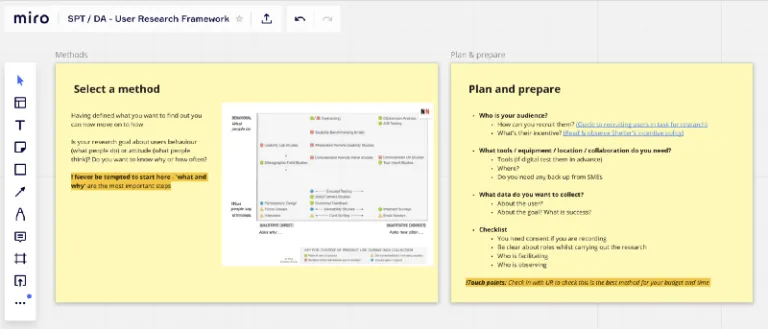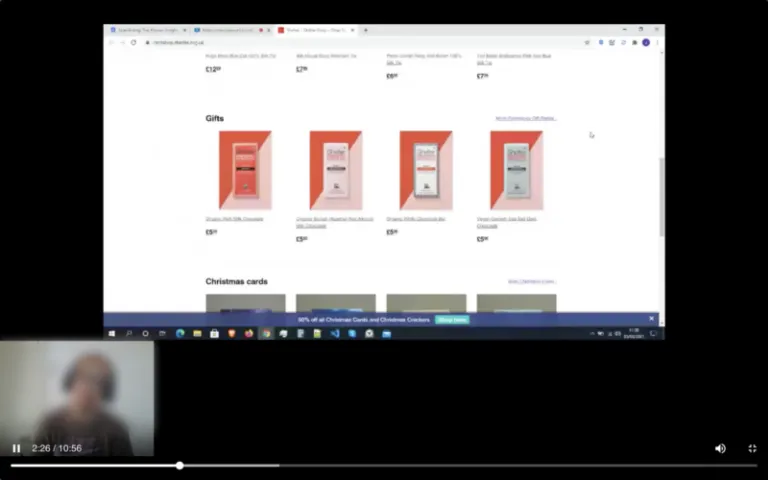Encouraging user research in teams without researchers
Published: by Caylee Farndon-Taylor

Shelter’s Lead Product Manager Philip Wilson often promotes the principle that users shouldn’t be able to visualise your organisation design by looking at your product. We don’t always succeed at this. For example a common question we ask ourselves at Shelter is whether our users see fundraising and campaigns as different activities. My hunch is that they don’t; that these are seen as part of the same ‘job’ (to help support Shelter’s work). However, our org design and website still treat these activities as separate things, for separate user groups.
In the UX team at Shelter I have the privilege of working alongside two excellent user researchers (soon to be three!). These researchers are completely focussed on Shelter’s service users; designing tools and services to advise those that need our help. While this is great for Shelter’s services, it means that other digital products such as Fundraising or Campaigns don’t have any devoted research support. So how do we fix this without restructuring Shelter’s entire org design?
Step one: develop research guidance that anyone can use

Screenshot from Shelter’s User Research Framework developed by Louise Roddan and Sue Jolly
The first thing our research team did was to create a user research framework that other teams could use to make sure that they were asking the right questions and not jumping to solutions, or skipping parts of the research process.
Our research process at Shelter generally looks like this:
- Validation stage: developing your problem statement, and research goal
- The ‘How’ stage: exploring different methods, and planning your approach
- Analysis stage: summarising insights, looking for patterns, defining next steps

Group analysis from some recent usability testing we did as part of a brand project
Having guidance available that teams can reference and use as a template to structure their work around means that they have the tools to start working independently. It also means that when they do need advice from the research team, these discussions are more focussed and useful because teams can be clearer about where they are in the process and what they are struggling with.
Step two: commission research tools and processes that are widely accessible
We have two main methods of running qualitative, remote user research at Shelter. When it is important that the research is conducted on our own user-base we source Shelter website users in-task via a tool called Ethnio, and then run our tests from Userlytics or Zoom. When the research isn’t dependant on participants being Shelter users we will generally run tests from Userlytics using their panel.
Up until last summer we were using Lookback as a testing platform, which worked well. However the switch to Userlytics has been invaluable when encouraging non-Service teams to do more research, because using the Userlytics panel instead of recruiting your own participants massively reduces the time and effort needed to set up your tests.

Screenshot of our panel options within Userlytics
One thing we’re starting to explore now is whether we might be able to create an inhouse user panel. Or even better, how we might be able to tap into some of the existing groups of users helping Shelter, from our Digital Campaigners to our Service Advisers to our shop volunteers.
As Lead UX Designer at Shelter, one of my main goals when I started was to encourage more user-led work across all our product streams. We have been able to achieve this by openly communicating our research processes within Shelter, and providing tools to encourage non-researchers to start thinking and acting in evidence-driven, user-led ways. In the last ten months this has resulted in research being conducted independently by teams including brand, fundraising, campaigns and (currently) retail who are running usability tests on our Digital charity shop.

Screenshot from our current user testing on our Digital charity shop
It has also led to more understanding of the importance of user research by senior stakeholders and budget holders. Last year this meant that we could afford to fund specialist research on the readability of proposed website fonts (particularly for users engaging with our advice content during periods of high personal stress). We’ve also recently been able to secure internal funding for an accessibility audit to improve the inclusivity of our website, which has been sorely needed for a long time.
My hope is that this work is not only creating more meaningful experiences for all of Shelter’s users. It is also helping us move away from a world where our users might be able to identify which parts of our website had researchers working on them, and which didn’t.
I’ve had the pleasure of making this work happen with the following researchers including Louise Roddan, Helen Devine and Sue Jolly. If you’d like to be a part of the work we’re doing for Shelter we’re currently hiring.